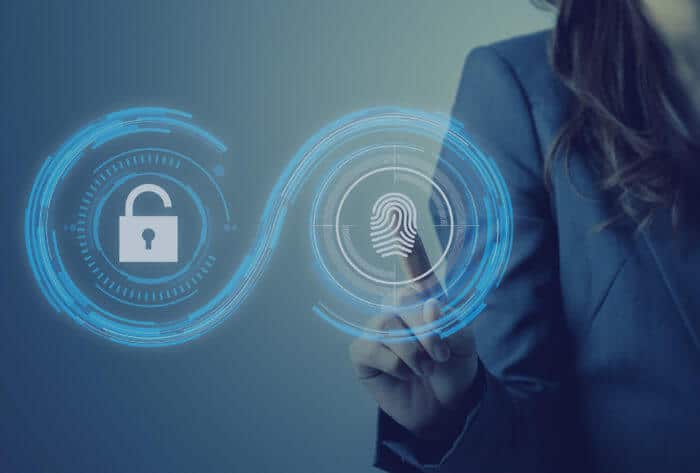Cybersecurity attacks are a growing concern in today’s digital world. As the use of technology increases, so does the risk of malicious activity. Cybercriminals are constantly finding new ways to exploit vulnerabilities in computer systems.
As a result, businesses and individuals must protect their data and systems from cyberattacks. Cybersecurity attacks can range from small-scale to large-scale attacks and involve various mischievous actions such as phishing, malware, and denial of service (DoS) attacks.
In today’s world, businesses and individuals must understand the different types of cyberattacks, the potential impacts of these attacks, and the measures that can be taken to protect their systems. Here are some of the top ways to prevent a cybersecurity attack.
Train your staff

One of the most critical steps businesses and organizations can take to protect their systems from cyberattacks is providing ongoing cybersecurity training for their employees. Cybersecurity training should include identifying phishing emails, recognizing malicious software, and understanding the importance of strong passwords.
By educating employees on the basics of cybersecurity, businesses can help ensure that their systems are better protected from malicious activities. Additionally, businesses should also provide training on how to respond to a cybersecurity incident. This will help ensure that employees know how to take the necessary steps to mitigate the damage caused by a cyberattack.
Install a Firewall
Another essential way to protect against cyberattacks is to install a firewall. A firewall is a software or hardware device designed to protect a network from unauthorized access. Firewalls are designed to detect and block hateful traffic from entering a system and to alert administrators to suspicious activity.
Businesses can help protect their systems from malicious actions for instance malware and phishing attacks by utilizing a firewall. Additionally, firewalls can help limit the damage caused by a successful cyberattack, as they can prevent attackers from accessing sensitive data.
Backup your data

Backing up data is another critical step in protecting against cyberattacks. By regularly backing up data, businesses can help ensure that they can restore their data and systems quickly in the event of a successful attack. By keeping multiple data backups, businesses can help minimize the impact of a cyberattack.
Backups should be stored in secure, off-site locations to ensure the security of the data. Additionally, businesses should regularly test their backups to ensure they are functional and up-to-date.
Use Strong Passwords
Using strong passwords is an essential step in protecting against cyberattacks. Passwords should be long, complex, and unique. Businesses and individuals should avoid reusing passwords and should regularly change their passwords.
Also, businesses should consider implementing two-factor authentication, which requires users to enter a second form of authentication (such as a code sent to a mobile phone) to access an account. This helps to ensure that only authorized individuals can access an account.
Control access to your systems

Controlling access to systems is an important step in preventing cyberattacks. Businesses should limit access to systems to only those individuals who need them. Businesses should also implement user access controls to ensure that only authorized individuals can access sensitive data.
This can help to minimize the threat of a positive attack, as attackers will not be able to access the data they are targeting. It is also essential to regularly review user access to make sure that only those who need access are granted it.
Keep your software up to date
Keeping software up to date is another important step in preventing cyberattacks. As new vulnerabilities are discovered, software developers often release updates to patch these vulnerabilities. Businesses and individuals need to ensure that their software is up to date, as this will help to ensure that their systems are better protected from cyberattacks.
Businesses should also consider using automated patching systems, which can help to ensure that all software is regularly updated. Additionally, businesses should consider using vulnerability scanning tools to recognize any possible vulnerabilities in their systems and then take steps to address them.
Access Management

Access management is an essential process for ensuring the security of a system. Access management involves setting up various controls and measures to make sure that only authorized individuals can access a system. Access management can involve setting up authentication processes, such as passwords and two-factor authentication.
It can also involve setting up access control lists, which define which users can access which systems. Access management can also involve setting up audit logs to track user activity. By implementing access management processes, businesses can help ensure that only authorized individuals can access their systems and that any suspicious activity is identified and addressed quickly.
Ensure endpoint protection
It is also important to ensure endpoint protection. Endpoint protection involves protecting the devices that are used to access a system, such as computers and mobile devices. Businesses should ensure that all devices are running up-to-date antivirus software and that the software is configured to run regular scans.
Additionally, businesses should also ensure that any devices that are used to access sensitive data are encrypted. Businesses should also consider using a mobile device management (MDM) system, which can help to ensure that all mobile devices are secure. MDM systems can help to make sure that all strategies are running the latest version of the operating system and can also help to track and manage devices that have been lost or stolen.
Monitor Network Activity

Monitoring network activity is also an important step in preventing cyberattacks. By monitoring network activity, businesses can identify suspicious activity that could indicate a potential attack. Businesses should consider using network monitoring tools, such as intrusion prevention systems and intrusion detection systems.
These tools can help detect malicious activity in real time and alert administrators when suspicious activity is detected. Businesses should also consider using log management systems to help track user activity and detect suspicious activity. Log management systems can help to identify potential attacks, as well as to investigate any successful attacks.
Implement a Security Policy
Businesses have a duty to consider implementing a security policy. A security policy is a set of rules and guidelines that define how a business should handle its data and systems. The security policy should define the acceptable use of systems and outline the steps that should be taken in the event of a cyberattack.
Additionally, the policy should define the roles and responsibilities of employees and should outline the processes for responding to a security incident. By implementing a security policy, businesses can help ensure that their systems are better protected from cyberattacks.
Use a Security Consulting Service

Finally, businesses should also consider using a cybersecurity consulting service. A security consulting service can help identify potential vulnerabilities in a system and develop strategies to protect against cyberattacks.
Additionally, security consultants can provide ongoing security assessments and help ensure that all systems are latest and secure. Businesses can help ensure that their systems are better protected from cyberattacks by using a security consulting service.
Conclusion
Cybersecurity attacks are a growing concern, and businesses and individuals must take steps to protect their systems and data from malicious activities. The steps discussed in this article can help to reduce the threat of a successful violence and can help to minimize the damage caused by a successful attack.
These measures can ensure that businesses and individuals are better protected from cyberattacks when appropriately implemented. It is important for businesses and individuals to be aware of the potential risks posed by cyberattacks and to take steps to protect their systems.









